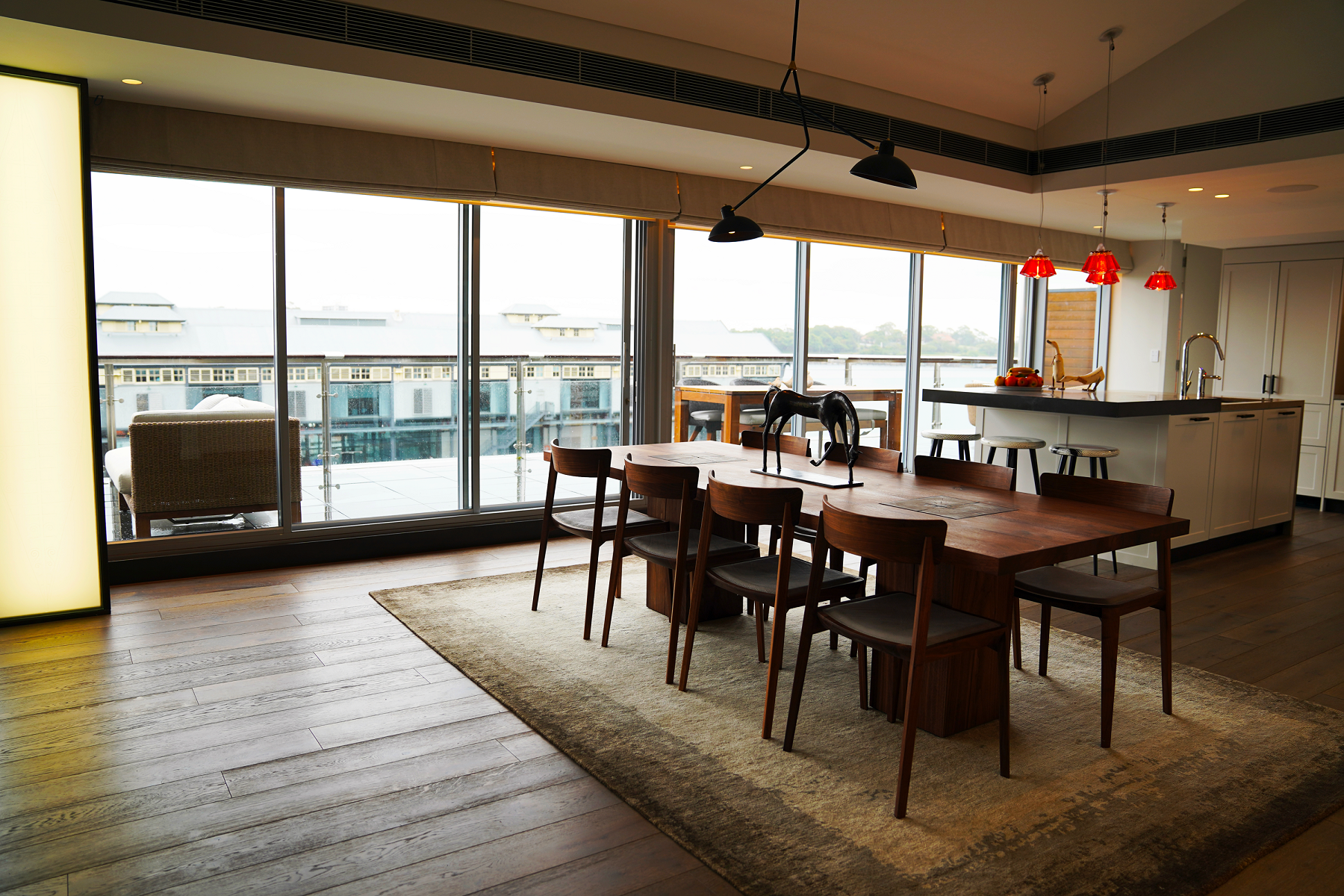The role of lighting in the home is not to be understated. Referred to as the ‘5th dimension of architecture’, a homes lighting design is key in both complimenting interior and exterior style, as well facilitating the wellbeing of the residents it houses due to the physiological effects of poor lighting.

Walsh Bay Apartment
As Lighting Specialists and wholesale suppliers carrying an extensive range, we have seen out projects of all budgets and designs, so know that there are no restrictions in creating the unique home you envision.
Optimsing domestic interior lighting
A lighting revolution that has taken place, which has seen the LED light bulbs replace incandescent globes across the country. To make the switch or to replace LED’s in an industry which sees design and technology evolve faster than the smart phone, we composed this article to share experience driven ideas for domestic interior lighting.
Selecting Lighting for each Room
This is not an elaborate concept that applies only to the subscribers of architectural digest, but rather a practically guided overview of scientific driven guidelines to creating the best lighting for any type of home.Its first crucial to understand that lighting can’t be the same in every room. No matter the budget, aesthetic, size or type of living quarters, rooms are designed differently and again being an element of architecture, lighting should be designed accordingly.
Living room
The living room being the hub of a household should have a luminance that stimulates conversation as well as abstract activities such as reading, watching movies and using devices with creative freedom. Ideal for this is ambient lighting and task lighting, as it is generally the first room we enter as we escape the harsh, battens, oyster lighting and panels of the working day.
The goal is to segment areas that maximse ergonomics by using recessed downlights, spotlights and track lighting. This is enhanced when used in conjunction with up lighting to the ceiling to coordinate with a natural tendency to look up – while also avoiding shadows. Other options for achieving this include upward facing floor lamps or wall washing linear’s.
Kitchen
Similar to the living room (as the two rooms often feed into each other), the kitchen should be fit with overhead ambient lighting which is then complimented with lower task lighting to illuminate work spaces. It is also a good design choice to pair this with a bold statement piece like a suspended pendant to hover over the kitchen bench or dining table.
Bedroom
After design – standard being surface mounted and recessed downlight fixtures, dimming control is key in the bedroom. As it is a place where you wake up in the brightest hours of the day and fall asleep in the darkest hours, the ability to adjust light to complement your body clock and mood is a big key to stimulating motivation and positive moods.
Entrance
The entrances have high ceilings, so use LED chandeliers or pendant lighting to enhance the beauty of your home.
Bathroom
In designing bathroom lighting the first step should be to ensure that the mirror will have the correct level of lighting, that’s soft on the features and prevents shadowing. The best choice for this is purpose designed bathroom mirror ceiling and wall lights. This also can be achieved by mimicking a ring light in adding LED strip lights down the edges of the mirror. This is then complimented by recessed or spot lighting with a IP44 or above to prevent moisture damage.
A beautiful interior is not only highlighted by lighting, as beauty can be created in the lights used themselves. For lighting design or product consultation for your office space, please contact us or alternatively you can purchase our range from wholesale lighting suppliers and retailers Australia wide.